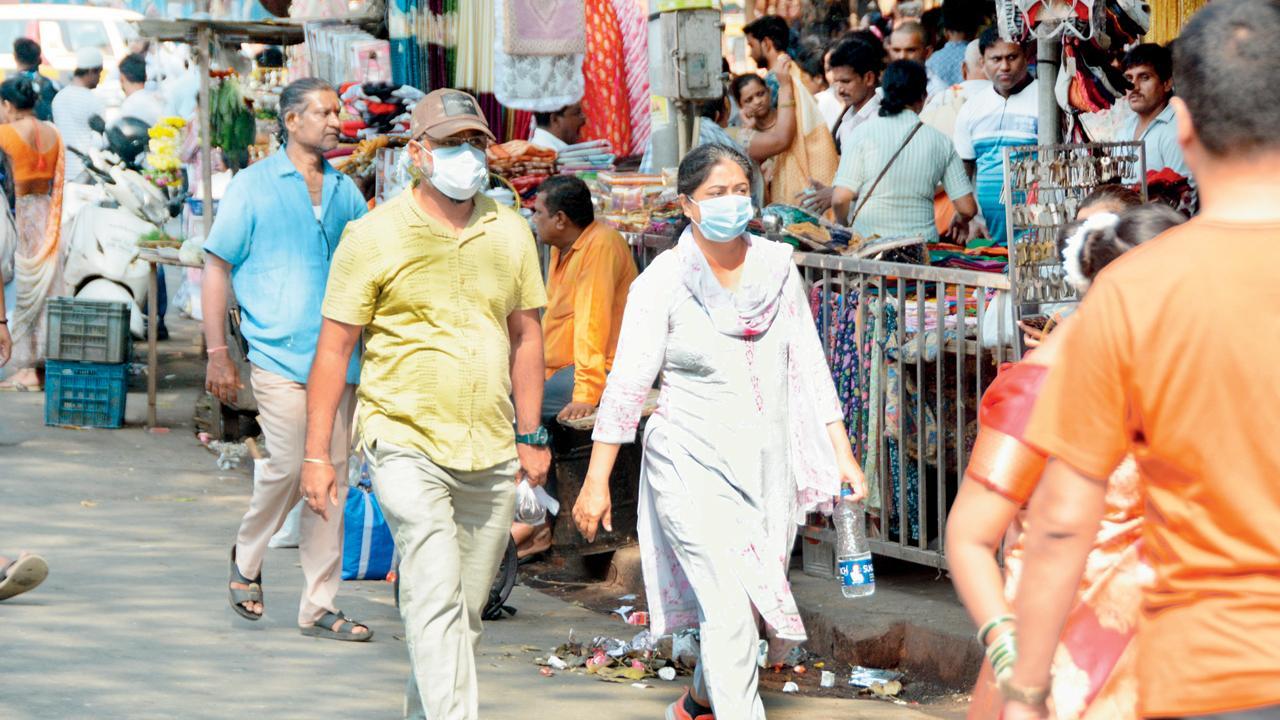That JN.1 is responsible for the increase is only a guess so far owing to its limited numbers and pending genome sequencing, officials say clearer picture to emerge next week

The state COVID-19 task force expects genome sequencing to be completed in large numbers next week. Pic/Satej Shinde
Of the 731 active COVID-19 cases in the state, only 29 have been confirmed to be of the new JN.1 variant. Parallely, genomic sequencing for most cases is still pending. This has resulted in uncertainty regarding the cause of the surge in COVID-19 cases. A clearer picture is expected to emerge by the beginning of next week state health officials said.
ADVERTISEMENT
“Generally speaking,” said Dr Rajesh Karyakarte, a member of the state’s COVID-19 task force overseeing the genomic sequencing, “a new variant is responsible for the surge when the surge caused by the older variant is waning. The older variants are not positioned to cause a surge unless there are new mutations.”
As of now, it is only a guess that the recent rise in COVID-19 cases is due to the JN.1 variant. “We will have a clearer idea by next week after sequencing in large numbers is completed. That is also when we will understand if it is only JN.1 that has caused the rise in numbers or if XBB.1.16 and XBB.2.3 are also present,” he said. On Monday, the total number of active cases in Maharashtra was 731.
Why was sequencing slow?
There is a very straightforward explanation for the slow pace of sequencing: there simply were not as many reported cases earlier. The number of cases started rising in mid-December. From 20 active cases in the state on December 15 with no hospitalisations, cases reached almost 700 within 15 days, and by December 31, 2023, 42 individuals were hospitalised, nine of them in the ICU.
So far, three deaths have been reported, with all patients having pre-existing comorbidities. “Having an evidence-driven answer to what is causing the surge will also help us understand what has caused hospitalisation or death in certain individuals. Even as the numbers have been fairly low, that understanding is critical for us,” Dr Karyakarte said.
Disease surveillance is key
When asked if there is a need to improve disease surveillance to better understand viruses like COVID-19, Dr Karyakarte said, “We did wastewater sampling when we did not have any cases of JN.1 because samples were low; its presence was detected and higher officials were alerted.”
This surveillance process involves monitoring wastewater by collecting samples from sewage treatment plants, open nullahs, and drains to understand the prevalence of disease-causing pathogens in communities. “It was used in some parts when COVID-19 was at an all-time high. It was also used in polio; in fact, wastewater sampling was a keystone in the eradication of polio,” Dr Karyakarte said, adding that this method needs to be ramped up and should be a routine part of disease surveillance in the state.
42
Patients hospitalised until Dec 31, 2023
09
Patients in ICU until Dec 31, 2023
 Subscribe today by clicking the link and stay updated with the latest news!" Click here!
Subscribe today by clicking the link and stay updated with the latest news!" Click here!







